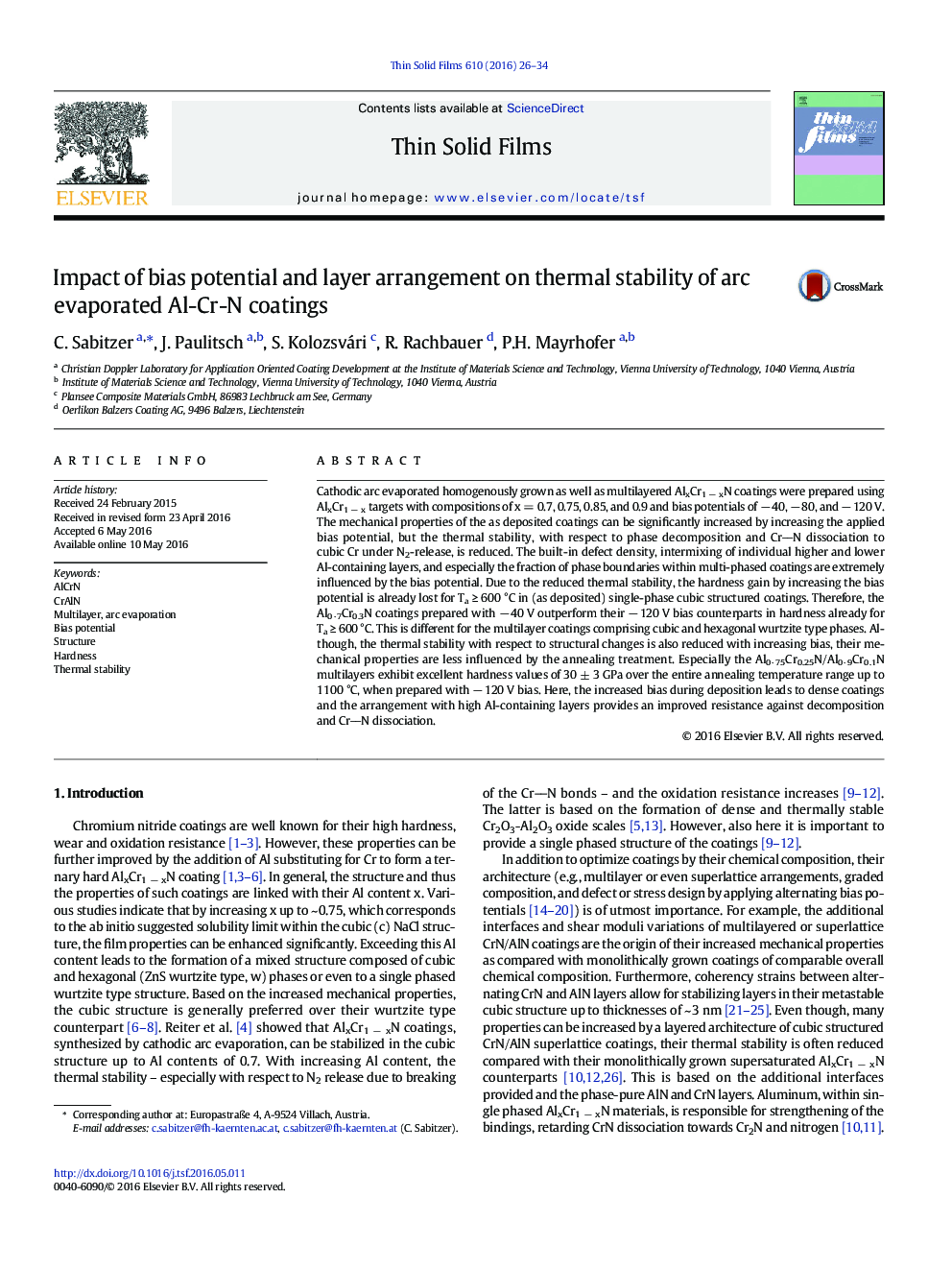| Article ID | Journal | Published Year | Pages | File Type |
|---|---|---|---|---|
| 1663959 | Thin Solid Films | 2016 | 9 Pages |
•Increased thermal stability of Al0·7Cr0.3N with lower bias potential.•Formation of single-phase cubic Al0·7Cr0.3N/Al0·85Cr0.15N with increasing bias.•Increased onset for decomposition for Al0·7Cr0.3N/Al0·85Cr0.15N with increasing bias.•Al0·75Cr0.25N/Al0·9Cr0.1N prepared with − 120 V, exhibiting 30 ± 3 GPa up to 1100 °C.
Cathodic arc evaporated homogenously grown as well as multilayered AlxCr1 − xN coatings were prepared using AlxCr1 − x targets with compositions of x = 0.7, 0.75, 0.85, and 0.9 and bias potentials of − 40, − 80, and − 120 V. The mechanical properties of the as deposited coatings can be significantly increased by increasing the applied bias potential, but the thermal stability, with respect to phase decomposition and CrN dissociation to cubic Cr under N2-release, is reduced. The built-in defect density, intermixing of individual higher and lower Al-containing layers, and especially the fraction of phase boundaries within multi-phased coatings are extremely influenced by the bias potential. Due to the reduced thermal stability, the hardness gain by increasing the bias potential is already lost for Ta ≥ 600 °C in (as deposited) single-phase cubic structured coatings. Therefore, the Al0·7Cr0.3N coatings prepared with − 40 V outperform their − 120 V bias counterparts in hardness already for Ta ≥ 600 °C. This is different for the multilayer coatings comprising cubic and hexagonal wurtzite type phases. Although, the thermal stability with respect to structural changes is also reduced with increasing bias, their mechanical properties are less influenced by the annealing treatment. Especially the Al0·75Cr0.25N/Al0·9Cr0.1N multilayers exhibit excellent hardness values of 30 ± 3 GPa over the entire annealing temperature range up to 1100 °C, when prepared with − 120 V bias. Here, the increased bias during deposition leads to dense coatings and the arrangement with high Al-containing layers provides an improved resistance against decomposition and CrN dissociation.
